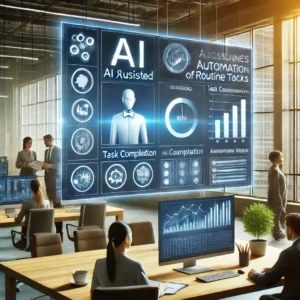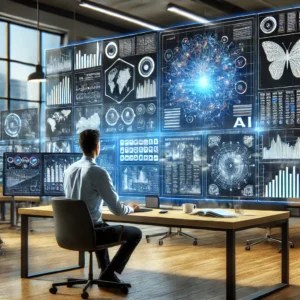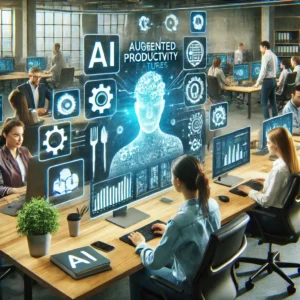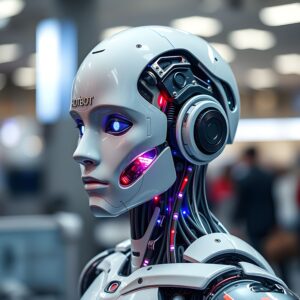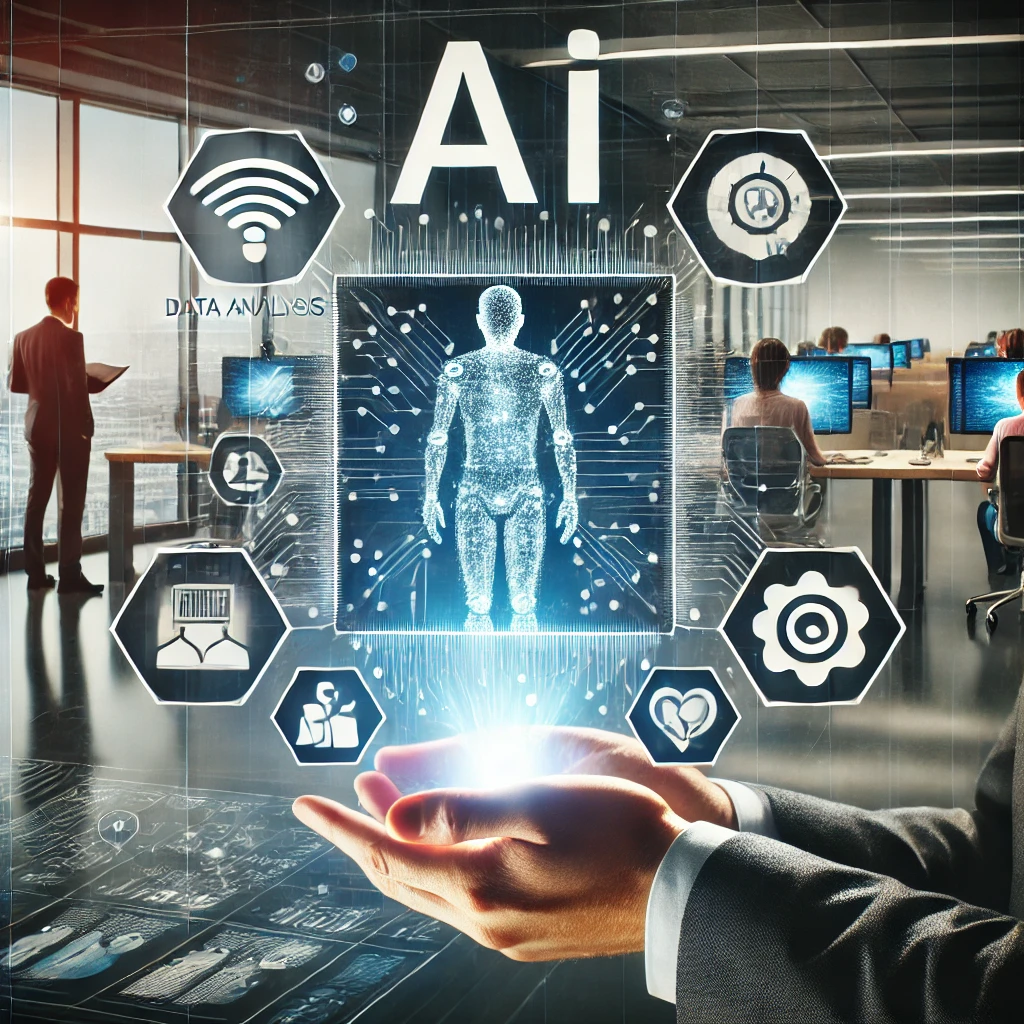
The integration of artificial intelligence (AI) into various sectors has significantly impacted the workforce, bringing both opportunities and challenges. This article explores how AI is reshaping job markets, altering traditional roles, and creating new career paths. Through detailed analysis, examples, and case studies, readers will understand the skills that are becoming essential, the ethical considerations involved, and what the future of work may look like in an AI-driven world. Learn how businesses and workers can adapt to stay competitive while embracing the transformative power of AI.
The Impact of AI on the Workforce
Artificial intelligence (AI) has been a game-changer in modern industries, automating repetitive tasks, enhancing decision-making, and streamlining operations. While these advancements promise increased productivity and efficiency, they also bring significant changes to the workforce. AI is not just replacing manual jobs but transforming job roles and creating entirely new types of employment. The integration of AI into business and industry raises questions about job security, skill requirements, and economic disparity.
This article delves into the multifaceted impact of AI on the workforce, highlighting the opportunities it presents, the challenges it poses, and the measures needed to navigate this shift successfully. We explore key trends, relevant examples, and strategies for businesses and workers to adapt to the evolving employment landscape.
Opportunities Presented by AI in the Workforce
AI offers a multitude of opportunities that enhance the workplace and create new pathways for employment and productivity.
1. Automation of Routine Tasks
One of the most significant benefits of AI is the automation of repetitive and mundane tasks, allowing employees to focus on more strategic and creative aspects of their roles.
- Administrative Support: AI-powered software can handle tasks like data entry, scheduling, and report generation, freeing up administrative professionals for higher-value work.
- Manufacturing Efficiency: Robotics powered by AI have been adopted in manufacturing to automate assembly lines, improving production speeds and consistency.
- Customer Interaction: AI-driven chatbots and virtual assistants provide 24/7 customer support, handling routine inquiries while human agents focus on complex issues.
2. Enhanced Decision-Making
AI aids in decision-making by processing and analyzing large sets of data faster and more accurately than humans, leading to better-informed strategies.
- Data-Driven Insights: AI tools analyze market trends and consumer data, allowing businesses to make evidence-based decisions that enhance competitiveness.
- Risk Management: AI-powered systems in finance detect fraudulent activities and assess credit risks, improving the accuracy of financial decision-making.
- Healthcare Diagnosis: In medical settings, AI assists doctors in diagnosing diseases through data analysis and pattern recognition, enhancing diagnostic accuracy and patient care.
3. Creation of New Job Roles
The rise of AI has led to the emergence of new job roles that did not exist a decade ago. These roles often require a blend of technical and creative skills.
- AI Specialists: There is growing demand for roles like AI engineers, data scientists, and machine learning experts who can design and maintain AI systems.
- AI Trainers and Data Annotators: These professionals train AI algorithms by labeling data, teaching models to recognize patterns, and improving the performance of AI applications.
- Ethics and Compliance Officers: The importance of ethical AI development has created roles dedicated to ensuring that AI systems align with legal, moral, and societal standards.
Challenges Posed by AI in the Workforce
While AI presents numerous benefits, it also poses significant challenges that need to be addressed to ensure an equitable transition into an AI-driven economy.
1. Job Displacement and Economic Disparity
AI-driven automation can lead to job displacement, particularly in sectors reliant on routine and manual labor. This displacement can contribute to economic disparity if not managed with proactive policies.
- Impact on Low-Skill Jobs: Jobs in manufacturing, retail, and customer service are at high risk of being replaced by automation, potentially affecting millions of workers.
- Wage Inequality: The adoption of AI has the potential to widen the wage gap, as high-skilled roles that work alongside AI often receive significantly higher compensation than positions that can be automated.
2. Skill Gaps and Workforce Adaptation
The integration of AI demands new skill sets, creating a gap between the skills workers currently possess and those that are now required.
- Need for Reskilling and Upskilling: Workers need to learn new technical skills such as coding, data analysis, and familiarity with AI tools to remain competitive in the job market.
- Continuous Learning: With AI technology constantly evolving, the workforce must engage in lifelong learning to adapt to changes and keep pace with technological advancements.
3. Ethical and social Concerns
The rise of AI in the workplace brings up ethical questions regarding privacy, decision-making fairness, and the overall impact on human interaction.
- Bias in AI Systems: AI models trained on biased data can perpetuate discrimination in hiring, promotions, and decision-making processes.
- Privacy Issues: AI-driven tools often rely on collecting vast amounts of data, raising concerns about the ethical use of personal information and data security.
Strategies for Navigating the AI-Driven Workforce
To thrive in an AI-driven job market, both individuals and businesses must adapt by embracing new strategies and fostering an environment conducive to continuous learning and ethical practices.
1. Embracing Lifelong Learning
Continuous education and skill development are essential for workers to stay relevant in the changing job market.
- Training Programs: Companies should invest in training and development programs to upskill employees in areas like AI literacy, data analysis, and digital fluency.
- Online Learning Platforms: Platforms like Coursera, Udemy, and LinkedIn Learning offer courses that help workers learn AI-related skills at their own pace.
2. Collaborating with AI
Rather than seeing AI as a competitor, workers and businesses should aim to collaborate with AI to enhance their roles and productivity.
- AI as an Augmentation Tool: AI should be used to augment human capabilities, allowing workers to focus on complex tasks that require creativity and emotional intelligence.
- Cross-Functional Teams: Teams that include both AI specialists and traditional professionals can leverage diverse perspectives to solve problems more efficiently.
3. Ensuring Ethical AI Implementation
Organizations must implement ethical guidelines to ensure that AI deployment aligns with societal values and fosters trust.
- Transparency and Accountability: Companies should make the functioning of AI systems as transparent as possible and establish clear accountability for AI-driven decisions.
- Fair AI Practices: Ensuring that AI models are trained with diverse, unbiased data can help prevent discrimination and promote fairness in AI-driven outcomes.
Case Studies: AI’s Impact on the Workforce
Case Study 1: Amazon’s Warehouse Automation
Amazon has integrated robots in its warehouses to assist with picking and packing items, which has increased productivity but also raised concerns about job displacement. To address these issues, Amazon has invested in reskilling programs, helping workers transition into roles that manage and maintain AI-driven systems.
Case Study 2: AI in Customer Service at H&M
H&M uses AI-powered chatbots to handle customer inquiries, which has improved efficiency and allowed human agents to focus on more complex customer interactions. This hybrid approach has led to better customer satisfaction and job retention for human employees who oversee AI operations.
Case Study 3: Healthcare AI and Diagnostic Support
AI tools like IBM Watson assist doctors by analyzing medical data to support diagnoses and treatment plans. While these tools enhance diagnostic accuracy, they have also created new roles for data scientists and IT specialists to maintain and develop AI technologies in healthcare.
Case Study 4: Skill Development Programs by Siemens
Siemens has introduced training programs focused on digital skills, AI literacy, and machine learning. This initiative has prepared employees to work with AI-driven technologies, ensuring they can adapt to the evolving industrial landscape and fill new, tech-centric job roles.
Case Study 5: AI-Assisted Creative Work at Adobe
Adobe has integrated AI into its suite of creative tools, enabling designers to automate repetitive tasks like resizing images and suggesting design elements. While this has streamlined workflows, it has also prompted designers to learn how to leverage AI features to enhance their creative output.
The Future of Work in an AI-Driven World
The future of work in an AI-driven economy will likely include a blend of human creativity and machine efficiency. Here are some expected trends and predictions:
- AI-Human Collaboration: The concept of AI as a co-worker will become the norm, with humans and machines working together to achieve more than either could independently.
- Expansion of Hybrid Roles: New roles that combine technical knowledge with industry expertise will emerge, such as AI ethics officers, human-AI interaction designers, and data translators.
- Global Workforce Changes: Remote work and digital nomadism, facilitated by AI tools that enhance communication and collaboration, will become more prevalent.
- Focus on Emotional Intelligence: Skills like empathy, communication, and adaptability will be in higher demand, as these human attributes complement AI’s technical strengths.
- Ongoing Ethical Debates: Conversations around AI ethics, bias, and privacy will continue to shape policies, ensuring that AI is used responsibly and inclusively.
FAQ
Q1: How does AI impact job security?
AI can automate routine tasks, leading to job displacement in some sectors. However, it also creates new opportunities by introducing roles that require managing and collaborating with AI systems.
Q2: What new job roles are emerging due to AI?
A2: New job roles include AI specialists, data scientists, AI ethics officers, and human-AI interaction designers, among others.
Q3: How can workers adapt to an AI-driven job market?
A3: Workers can adapt by engaging in lifelong learning, acquiring technical skills related to AI and data analysis, and developing soft skills like creativity and communication.
Q4: What are the challenges of integrating AI in the workforce?
A4: Challenges include job displacement, skill gaps, potential biases in AI systems, and ethical concerns related to privacy and decision-making fairness.
Q5: What strategies can businesses use to ensure ethical AI practices?
A5: Businesses should adopt transparent AI systems, ensure data diversity to minimize bias, and establish accountability for AI-driven decisions to align with ethical standards.
AI’s impact on the workforce is profound and multifaceted, bringing both opportunities and challenges. By embracing continuous learning, ethical AI practices, and a collaborative approach, businesses and individuals can navigate the evolving job market and thrive in an AI-driven future.
